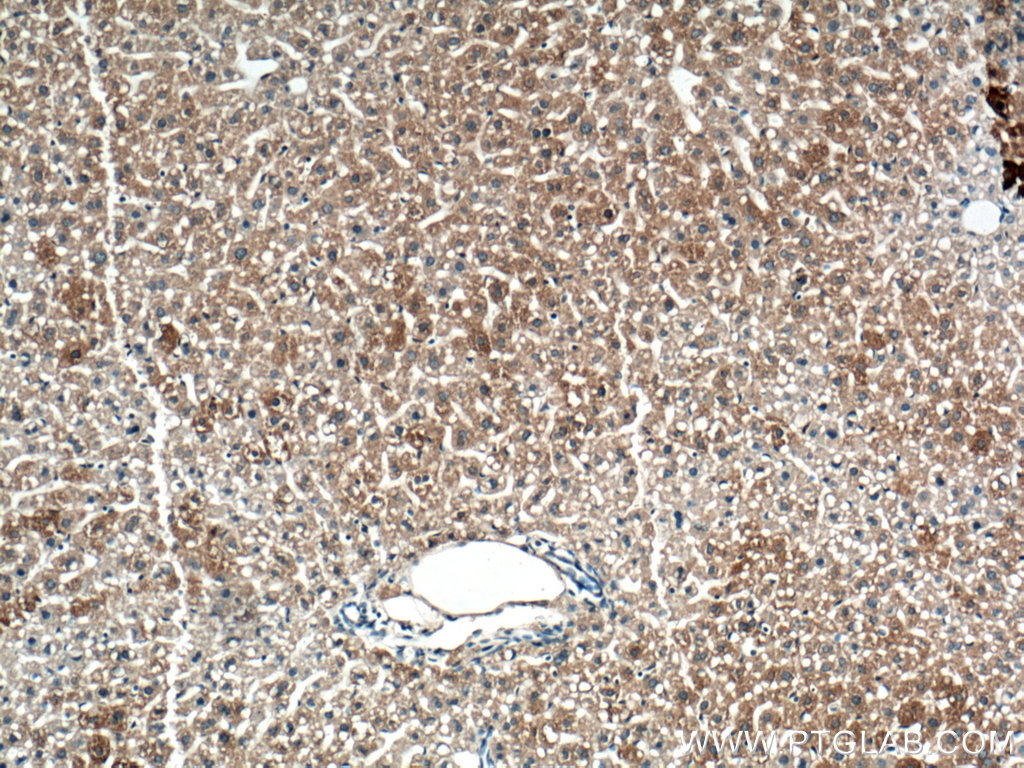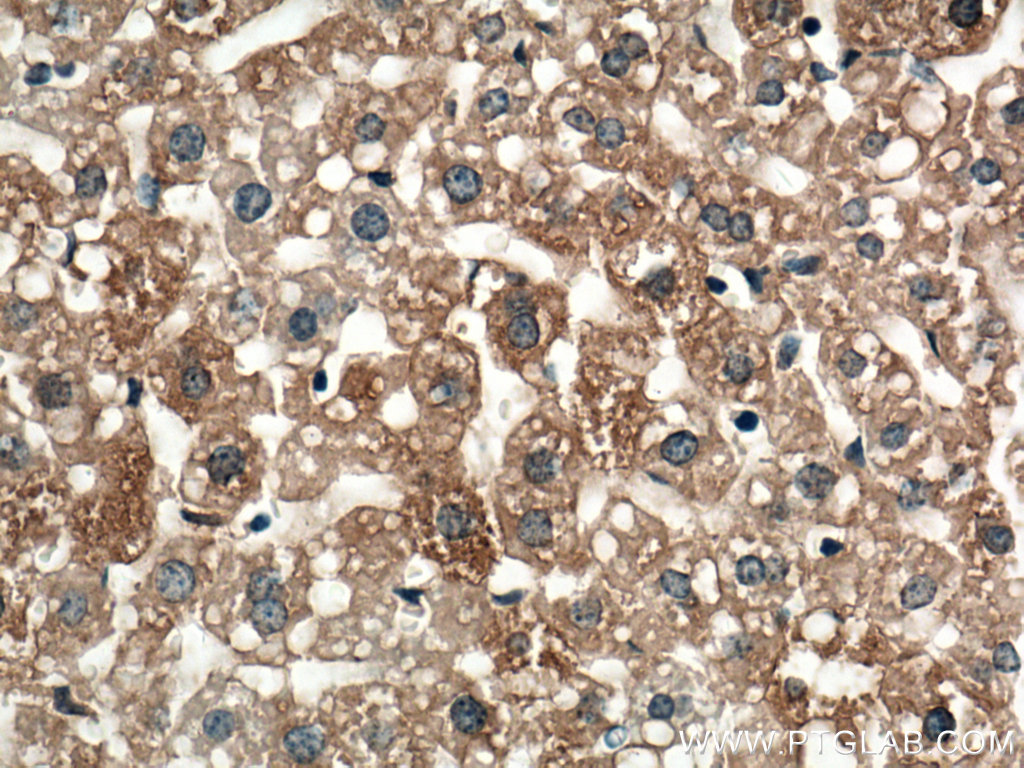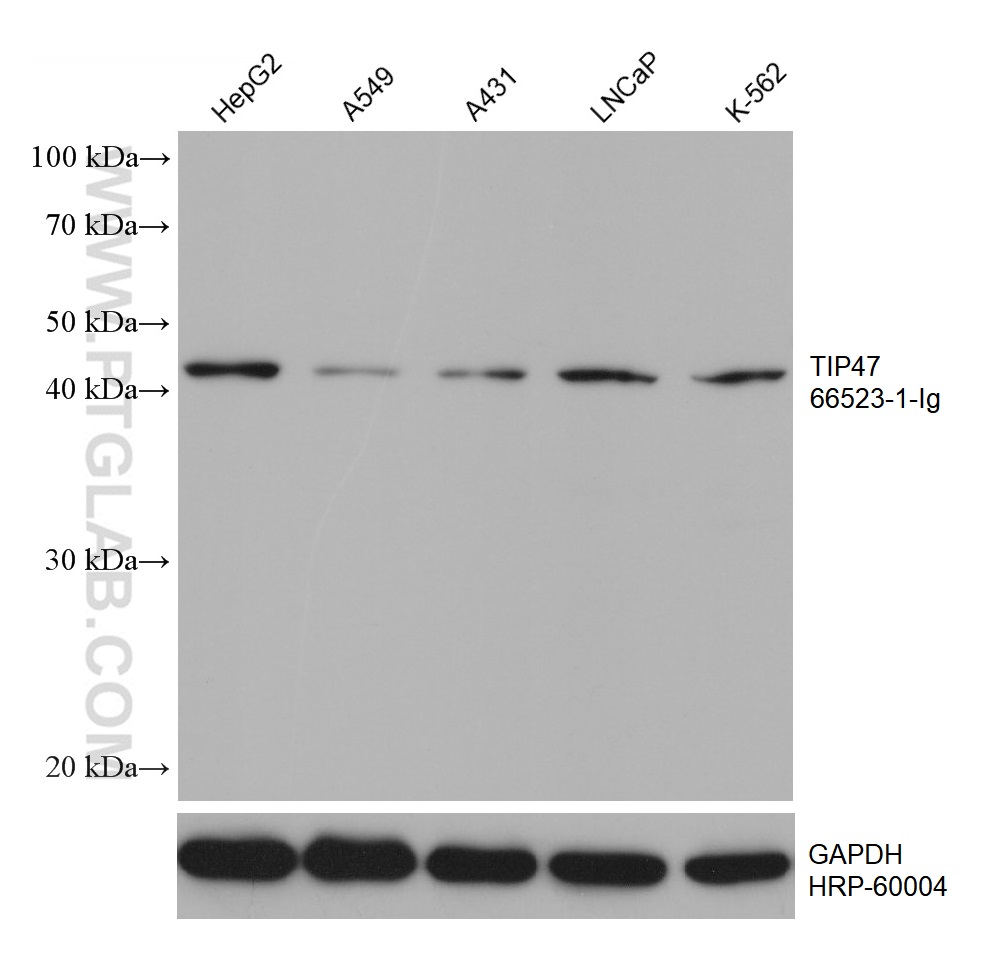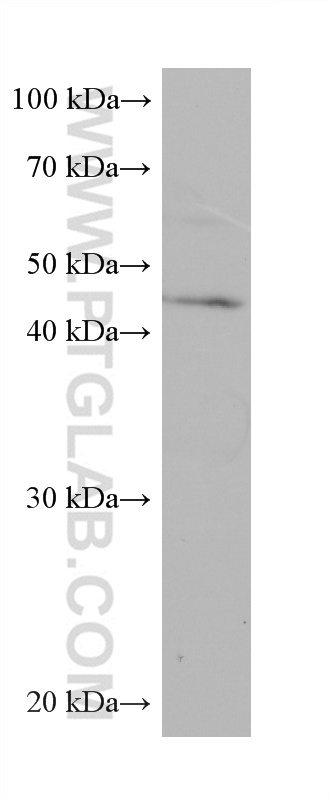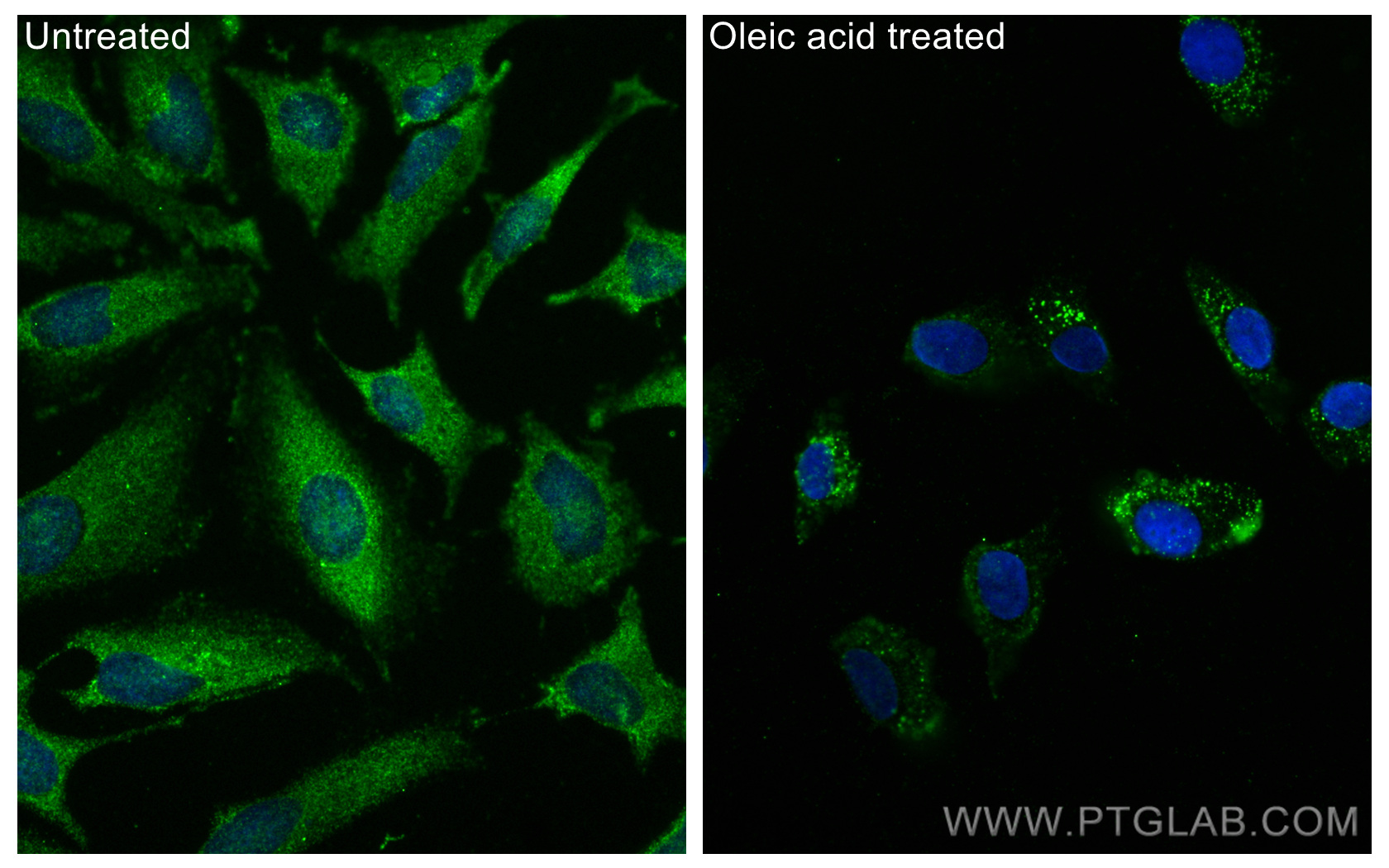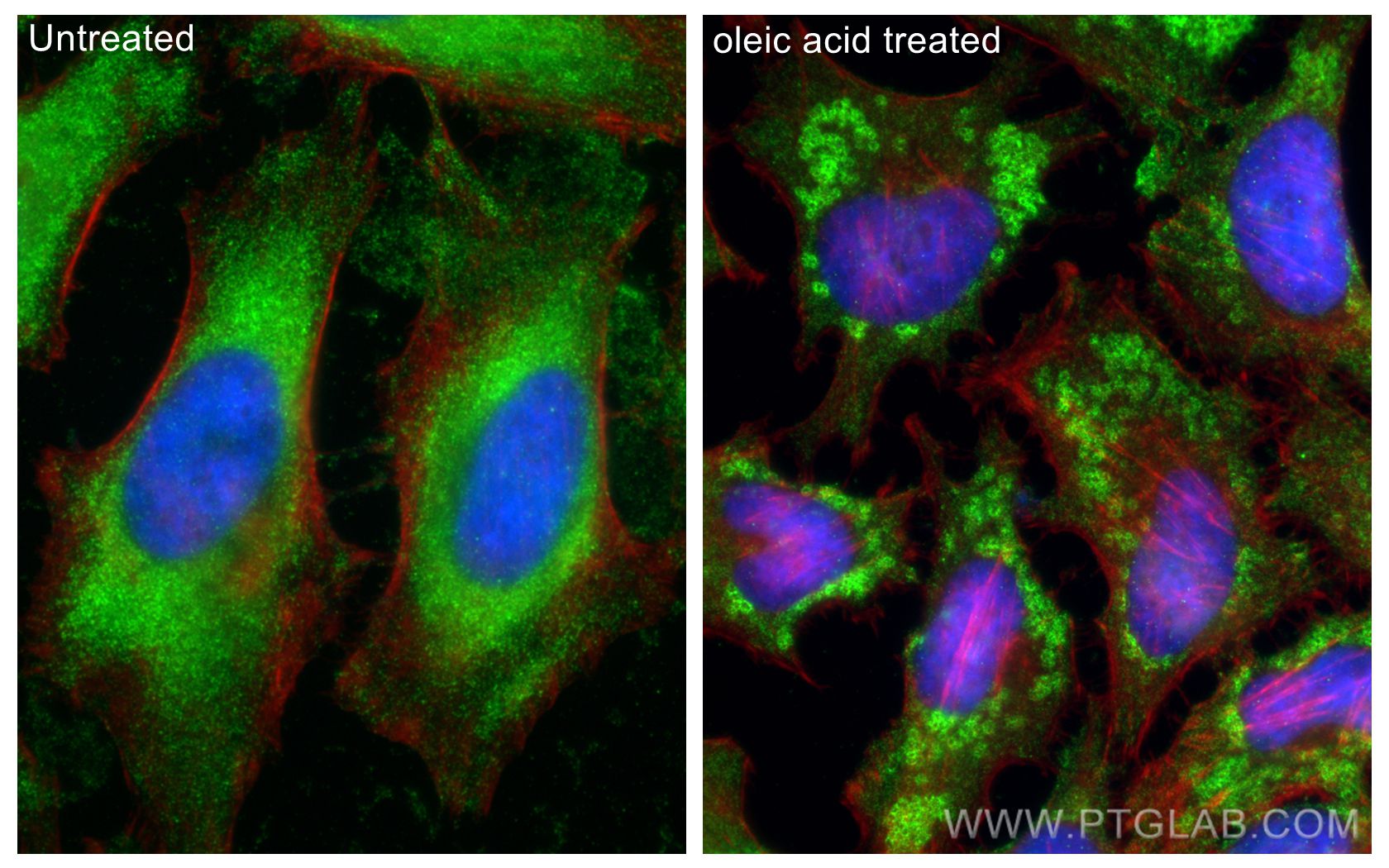验证数据展示
产品信息
66523-1-PBS targets Perilipin 3/TIP47 in WB, IHC, IF/ICC, Indirect ELISA applications and shows reactivity with human, mouse samples.
| 经测试应用 | WB, IHC, IF/ICC, Indirect ELISA Application Description |
| 经测试反应性 | human, mouse |
| 免疫原 |
CatNo: Ag1028 Product name: Recombinant human M6PRBP1 protein Source: e coli.-derived, PGEX-4T Tag: GST Domain: 134-434 aa of BC007566 Sequence: EMVSSAKDTVATQLSEAVDATRGAVQSGVDKTKSVVTGGVQSVMGSRLGQMVLSGVDTVLGKSEEWADNHLPLTDAELARIATSLDGFDVASVQQQRQEQSYFVRLGSLSERLRQHAYEHSLGKLRATKQRAQEALLQLSQALSLMETVKQGVDQKLVEGQEKLHQMWLSWNQKQLQGPEKEPPKPEQVESRALTMFRDIAQQLQATCTSLGSSIQGLPTNVKDQVQQARRQVEDLQATFSSIHSFQDLSSSILAQSRERVASAREALDHMVEYVAQNTPVTWLVGPFAPGITEKAPEEKK 种属同源性预测 |
| 宿主/亚型 | Mouse / IgG1 |
| 抗体类别 | Monoclonal |
| 产品类型 | Antibody |
| 全称 | mannose-6-phosphate receptor binding protein 1 |
| 别名 | M6PRBP1, Perilipin 3, TIP47, Mannose-6-phosphate receptor-binding protein 1, 4C11B1 |
| 计算分子量 | 47 kDa |
| 观测分子量 | 47 kDa |
| GenBank蛋白编号 | BC007566 |
| 基因名称 | TIP47/PLIN3 |
| Gene ID (NCBI) | 10226 |
| RRID | AB_2881886 |
| 偶联类型 | Unconjugated |
| 形式 | Liquid |
| 纯化方式 | Protein G purification |
| UNIPROT ID | O60664 |
| 储存缓冲液 | PBS only, pH 7.3. |
| 储存条件 | Store at -80°C. The product is shipped with ice packs. Upon receipt, store it immediately at -80°C |
背景介绍
Mannose 6-phosphate receptors (M6PRs) transport newly synthesized lysosomal hydrolases from the Golgi to prelysosomes and then return to the Golgi for another round of transport. M6PRBP1 (mannose-6-phosphate receptor binding protein 1), also known as TIP47, PLIN3 or PP17, interacts with the cytoplasmic domains of both cation-independent and cation-dependent M6PRs, and is required for endosome-to-Golgi transport. In addition to M6PR recycling, M6PRBP1 plays a role in lipid droplet biogenesis, and is also implicated in rhodopsin photobleaching and viral infection. M6PRBP1 has been found to be expressed in a variety of human tissues (including colon, liver and lung parenchyme, mammary gland, and skin) and is overexpressed in certain cancer cell lines. It binds to lipid droplets and also occurs in cytosol and on endosomal membranes.

